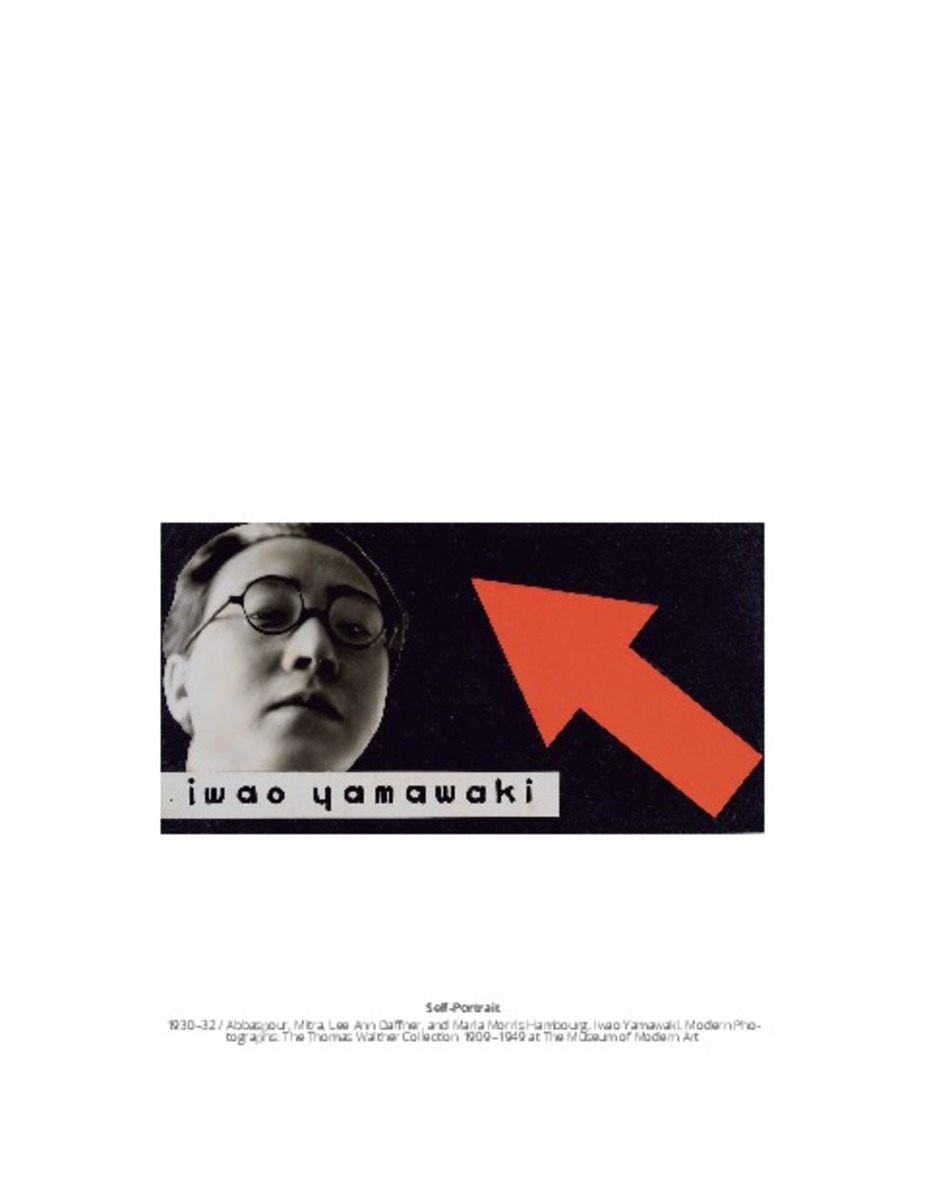Full metadata record
| DC Field | Value | Language |
|---|---|---|
| dc.creator | Rojo, E. (Enrique) | - |
| dc.date.accessioned | 2016-11-23T11:19:43Z | - |
| dc.date.available | 2016-11-23T11:19:43Z | - |
| dc.date.issued | 2016 | - |
| dc.identifier.citation | Rojo, E., (2016) ""Iwao Yamawaki: Self Portraits between Europe and Japan"" En: Alcolea, R.A, Tárrago-Mingo, J., (eds.), en Congreso internacional: Inter photo arch ""Interacciones"", celebrado en Pamplona, los días 2 al 4 de Noviembre de 2016, (pp. 342-353) | es_ES |
| dc.identifier.isbn | 978-848081-518-5 | - |
| dc.identifier.uri | https://hdl.handle.net/10171/42356 | - |
| dc.description.abstract | Iwao Yamawaki (1898-1987) was one of these artists modeled in the Bauhaus that combined various disciplines: architecture and photography. He moved with his wife to the German school from 1930 until 1932 and produced a body of work that epitomizes what the Bauhaus was all about. In our western world, his pictures and collages are his most appreciated work. Indeed, his most famous composition “der Schlag gegen das Bauhaus” became a manifest against the increasing Social-National Movement in Germany the same year that the Bauhaus was forced to dismantle. After his return to Japan accompanied by his wife, Yamawaki took his focus away from photography. He had graduated as an architect before his stay in Germany and studied photography while it was there essentially because he was disappointed with the way architecture was practiced in that period in his home Country. It seems however that he has been criticized as an “amateur” photographer, and so he returned to architecture after his arrival to Japan in 1932. Yamawaki designed his buildings in a German-trained way, following the principles of a rationalized architecture. He tried to bring the “Sachlichkeit” to suburban and urban Tokyo. As bitter times were to come due to War, he sought to maintain involved in the organization of Exhibitions, including some that he was able to show in the Bauhaus. Inevitably, the paper will develop his twofaceted career as architect and photographer during the Interwar period. Yamawaki is a compelling case not only for this duality but because he is one of the few Japanese figures of the time that got to know Europe, the Bauhaus, and its artistic ideas, personally. So he could develop them in Japan where other aesthetics usually related to traditional architecture were preferred or either privileged by the reigning emperor and his administration. | es_ES |
| dc.language.iso | eng | es_ES |
| dc.publisher | Servicio de Publicaciones Universidad de Navarra | es_ES |
| dc.rights | info:eu-repo/semantics/openAccess | es_ES |
| dc.subject | Bauhaus | es_ES |
| dc.subject | Influence | es_ES |
| dc.subject | Europe | es_ES |
| dc.subject | Japan | es_ES |
| dc.subject | Interwar | es_ES |
| dc.subject | Materias Investigacion::Arquitectura | es_ES |
| dc.title | Iwao Yamawaki: Self Portraits between Europe and Japan | es_ES |
| dc.type | info:eu-repo/semantics/article | es_ES |
Files in This Item:
Statistics and impact
Items in Dadun are protected by copyright, with all rights reserved, unless otherwise indicated.






